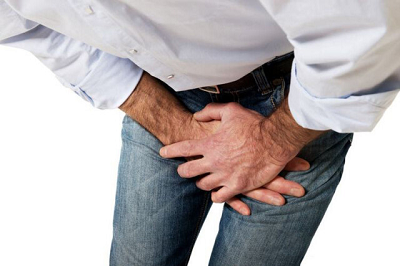Unraveling the Mystery: Could Prostatitis be the Culprit Behind Prostate Pain?
Pain in the prostate is not necessarily prostatitis, but prostatitis may cause prostate pain. Prostatitis is a common and frequently-occurring disease in men. The main clinical manifestations are frequent urination, urgency, painful urination, or pain in the lower abdomen and perineum.

Why does prostatitis cause prostate pain?
There are many reasons why prostatitis causes pain. Some are the direct stimulation of inflammation, leading to the tension of prostate capsule, which causes pain. Some are due to the obstruction of catheter excretion of prostate, such as sitting for too long, resulting in pain.
What's more is that after the inflammation of the prostate, the neighbors-pelvic floor muscles around the prostate have an abnormal contraction and relaxation of the muscles. In this way, the pelvic floor muscles convulse and have forced and continuous tension, and then the surrounding muscle spasms lead to pain.
There are many causes of prostate pain, such as infection, local muscle tension and spasm, local injury, mental and psychological factors, bad living habits, etc.
1. Infection. Bacterial infection of the prostate causes bacterial prostatitis. Because the host cells in the prostate interact with bacterial metabolites, it may cause prostate pain symptoms.
2. Local muscle tension and spasm. The prostate is located at the bottom of the pelvic cavity and is closely connected with the surrounding tissue. It is affected by the bladder rectum, lower urethra and sexual excitement center. It is prone to congestion and edema, stimulating nerves and reflecting the surrounding tissue to cause reflex pain.
3. Local damage. Prostate damage caused by a local puncture, injection, physical therapy, and trauma may lead to pain and discomfort in the prostate.
4. Psychosocial factors. Excessive mental stress, anxiety, etc., may also cause prostate pain symptoms.
5. Bad living habits. Frequent sexual impulses, irregular sexual life, long-term staying up late, excessive fatigue, spicy diet, alcoholism, cold shelter, long-term cycling, sedentary, holding urine, etc. may also induce prostate pain and discomfort.
If prostate pain occurs or the symptom persists, it is recommended to go to the male department or urology department of the hospital in time, actively check and clarify the cause under the guidance of professional doctors, and carry out targeted treatment to promote the regression of symptoms and avoid the occurrence of adverse conditions.
Prostate pain is a relatively common male disease that can cause patients to have urinary urgency, frequent urination, urinary pain, sexual dysfunction, and other symptoms, significantly impacting men's life and work. So what should prostate pain do? Here are some treatments for prostate pain.
1. General treatment. Some patients' prostate pain is not too severe but a little faint. At this time, there is no need to use drugs. Just take general treatment. In this case, patients need to develop good living habits, do not smoke, not drink alcohol, not eat spicy and stimulating food, not sitting for long, not hold urine, and exercise reasonably. At the same time, they should maintain an optimistic attitude, and the prostate pain can gradually heal.
2. Drug treatment. The most commonly used drug to treat prostate pain is antibiotics, but taking antibiotics requires a detailed examination in the hospital and then under the guidance of a doctor. Do not blindly abuse antibacterial drugs, making the bacteria resistant and more difficult to treat. If it is prostate pain caused by chronic prostatitis, patients can use oral Chinese patent medicine Diuretic and Anti-inflammatory Pill to clear away heat and detoxify, relieve inflammation and relieve pain, and improve symptoms.
3. Massage therapy. Prostate massage is a very effective treatment method. It massages the patient's prostate through appropriate methods to promote the local metabolism of the prostate so that toxins and germs can speed up the exclusion of the body, thus effectively alleviating the symptoms of prostate pain.
4. Physical therapy. That is, it helps patients relieve prostate pain through physical factors such as point, light and heat. The principle is to accelerate the local blood circulation of the prostate through various physical factors to accelerate the elimination of inflammation and reduce the pain of the prostate. Physical therapy is generally used as an auxiliary therapy that can be effective in the short term.
Recommended Readings:
Is Increased Prostatic Fluid Related to Prostatitis?
Current Situation and Progress in the Treatment of Prostatitis
Is Leg Pain Related to Prostatitis?



